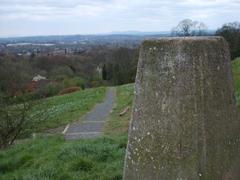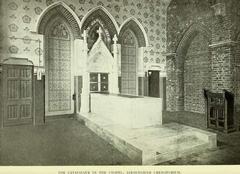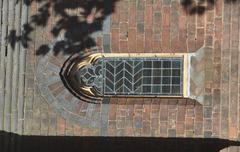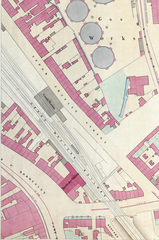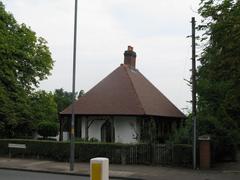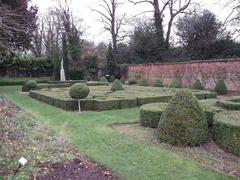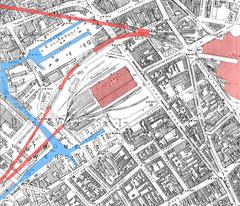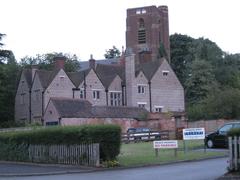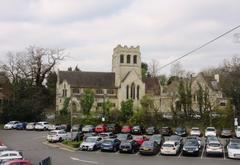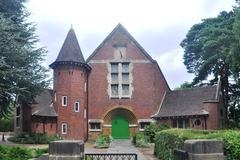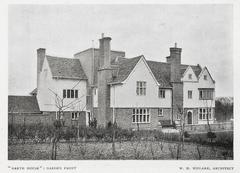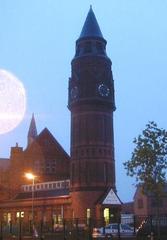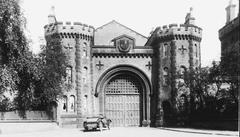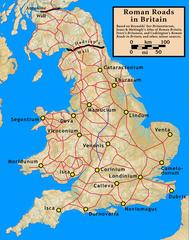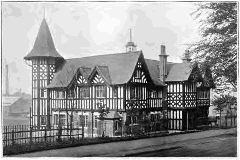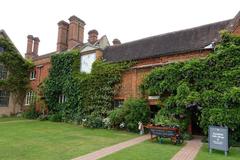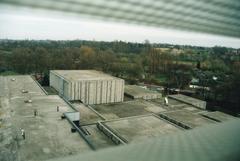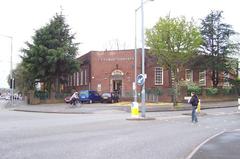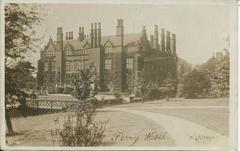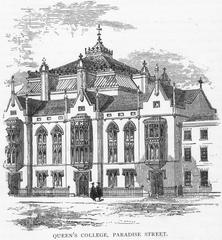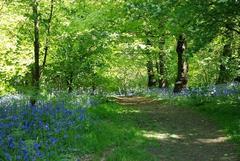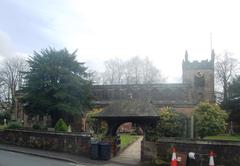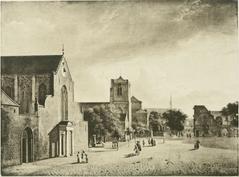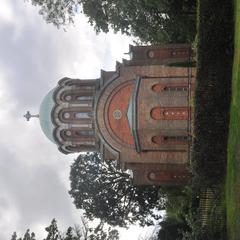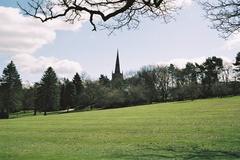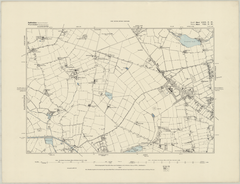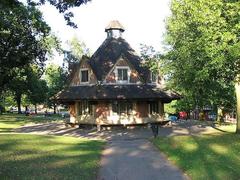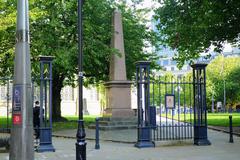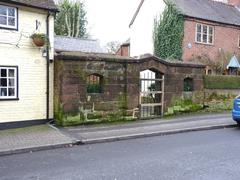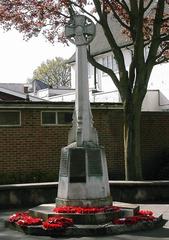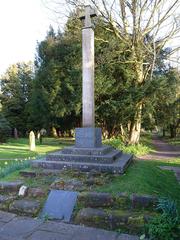Comprehensive Guide to Visiting Clent Hills, Birmingham
Date: 24/07/2024
Introduction
The Clent Hills, located just 10 miles southwest of Birmingham in Worcestershire, England, offer a captivating blend of natural beauty, historical intrigue, and recreational activities. As part of the National Trust, these hills have become a popular destination for day-trippers, history enthusiasts, and nature lovers alike. This comprehensive guide aims to provide you with essential information on visiting hours, ticket prices, historical significance, and various outdoor activities available at the Clent Hills.
Steeped in history, the Clent Hills have been a significant part of the regional landscape since ancient times. The area houses remains of a multi-vallate Iron Age hillfort on Wychbury Hill, indicating its strategic importance during the Iron Age (Wikipedia). During medieval times, the hills were part of extensive woodlands used for grazing and timber. By the 18th century, the Clent Hills had become a popular leisure destination, featuring follies like the Four Stones (National Trust).
Managed by the National Trust since 1959, the Clent Hills have undergone significant conservation efforts to preserve their unique landscape and biodiversity. The hills are home to a variety of plant and animal species, making it a botanical haven and a wildlife sanctuary. For those seeking outdoor adventures, the Clent Hills offer miles of footpaths, bridleways, and trails with panoramic views over the Cotswolds, Shropshire Hills, and Welsh borders. Whether you’re hiking, cycling, or simply enjoying the scenic beauty, the Clent Hills promise a rejuvenating escape into nature.
This guide will cover everything you need to know for a memorable visit, including detailed information on visiting hours, ticket prices, travel tips, and nearby attractions. We’ll also delve into the hills’ historical and cultural significance and highlight various activities and events that make the Clent Hills a must-visit destination.
Table of Contents
- Introduction
- Historical Significance
- Visitor Information
- Cultural and Recreational Significance
- Conservation Efforts
- Nearby Attractions
- Accessibility and Facilities
- Events and Activities
- FAQ
- Conclusion
Historical Significance
Early History and Archaeological Findings
The Clent Hills have a history that stretches back to ancient times. Once part of a Mercian forest, the area is home to the remains of a multi-vallate Iron Age hillfort on Wychbury Hill, indicating its strategic importance during the Iron Age. Clent appears in the Domesday Book as “Klinter,” derived from the Scandinavian word “klint,” meaning cliff, underscoring its long-standing significance in the regional landscape (Wikipedia).
Medieval and Early Modern Periods
During medieval times, the Clent Hills were part of extensive woodlands used for grazing and timber. By the 18th century, the hills had become a popular destination for day-trippers, and the construction of follies like the Four Stones added to their appeal (National Trust).
19th and 20th Centuries
The management of the Clent Hills saw significant changes in the 19th and 20th centuries. Clent Hill Common was managed by a Board of Conservators from 1881 to 1959, and Walton Hill Common became regulated under the Commons Act of 1899. Both areas were given to the National Trust in 1959, leading to enhanced conservation efforts (Wikipedia).
Visitor Information
Opening Hours
The Clent Hills are open year-round, with varying hours depending on the season. It’s advisable to check the National Trust website for the most current information.
Ticket Prices
Entry to the Clent Hills is free, although parking charges apply. National Trust members can park for free, while non-members must pay a small fee.
Travel Tips
The main entry point is the Nimmings Wood car park, which features an independent family-run café. Visitors should wear appropriate footwear for hiking and bring water, especially during warmer months.
Cultural and Recreational Significance
Activities and Trails
The Clent Hills offer miles of footpaths, bridleways, and trails with panoramic views over the Cotswolds, Shropshire Hills, and Welsh borders. The area is ideal for walkers, cyclists, and nature lovers (National Trust).
Bluebell Valley
In May, Bluebell Valley becomes a stunning floral display, attracting numerous visitors who come to witness the breathtaking bluebells in bloom (National Trust).
Conservation Efforts
The National Trust has implemented various conservation initiatives, including using cattle to manage the heathland and conducting archaeological research to uncover historical secrets. These efforts ensure the Clent Hills’ unique landscape and biodiversity are preserved (National Trust).
Nearby Attractions
The Clent Hills are close to several other attractions, including Worcester Cathedral and the West Midlands Safari Park. These nearby sites make it easy to plan a full day of activities in the region.
Accessibility and Facilities
The Clent Hills are accessible to visitors of all abilities, with easy access paths and facilities to ensure a comfortable visit. The Nimmings Wood car park serves as the main entry point, featuring an independent café for refreshments.
Events and Activities
The Clent Hills host various events throughout the year, such as trail running workshops, seasonal celebrations, and family activity walks. The Halloween Walk offers a festive way to experience the hills’ natural beauty (National Trust).
FAQ
What are the opening hours of Clent Hills?
The Clent Hills are open year-round, but hours vary by season. Check the National Trust website for the latest information.
Are there guided tours available at Clent Hills?
Yes, guided walking tours led by passionate volunteers or Rangers are available, offering insights into the history and myths of the area.
What are the ticket prices?
Entry is free, but parking charges apply. National Trust members can park for free, while non-members pay a small fee.
Conclusion
The Clent Hills offer a unique blend of historical significance, natural beauty, and recreational activities. From their ancient origins to their modern-day role as a conservation area, the Clent Hills provide a memorable experience for all visitors.
Call to Action
Don’t miss out on exploring the Clent Hills! Download the mobile app Audiala for more guides, check out other related posts, or follow us on social media for updates and tips.
References
- Wikipedia. (n.d.). Clent Hills. Retrieved from Wikipedia
- National Trust. (n.d.). Things to do at Clent Hills. Retrieved from National Trust
- National Trust. (n.d.). Our work on the Clent Hills. Retrieved from National Trust
- National Trust. (n.d.). Outdoor activities on the Clent Hills. Retrieved from National Trust








